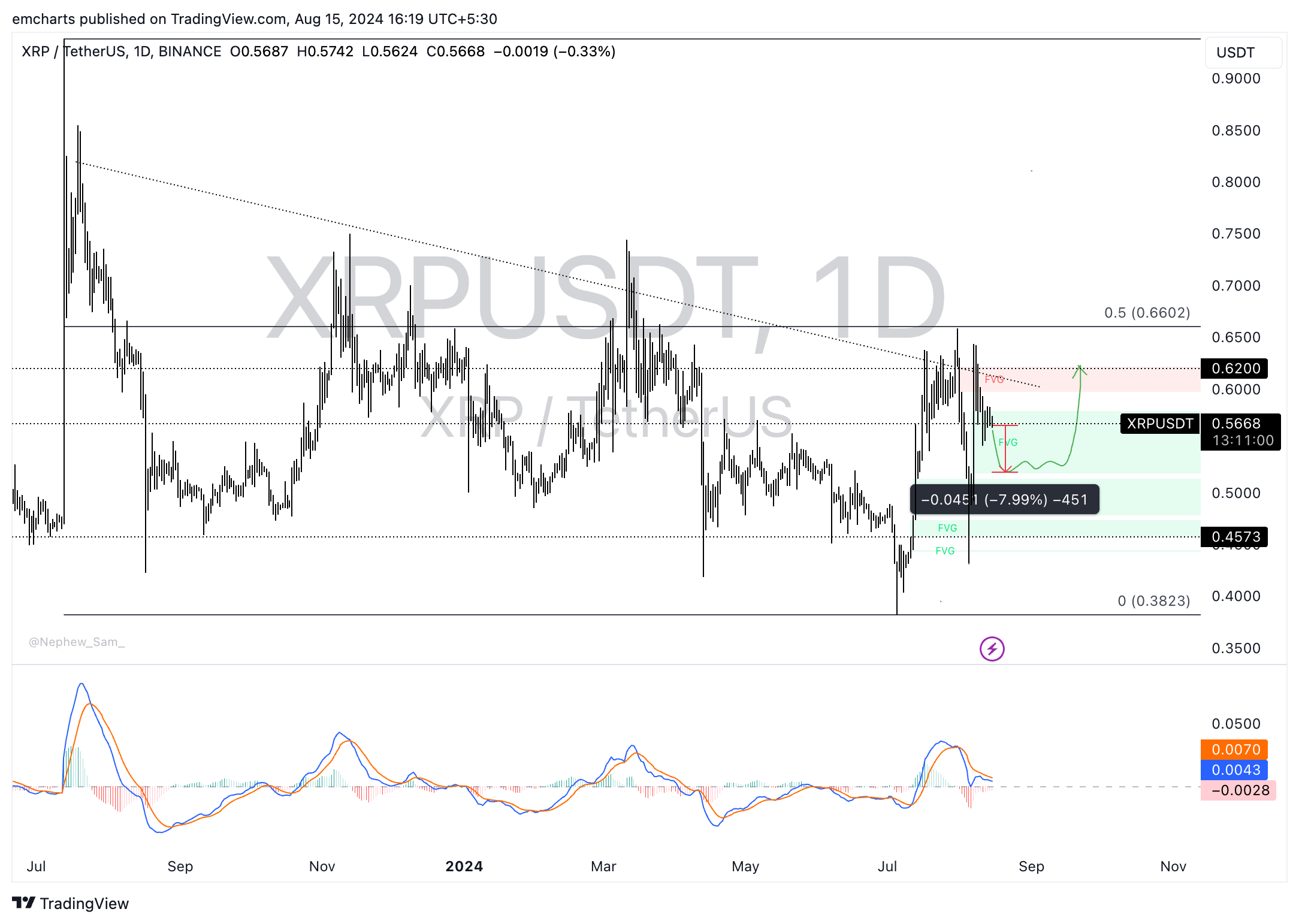Ripple faces selling pressure as XRP traders take profits
- Ripple partners with SBI Digital Commodity, a Japanese financial giant, to boost XRPLedger utility.
- XRP suffers from rising selling pressure as traders took over $230 million in profits in August.
- XRP extends losses on Thursday, slipping under key support at $0.57.
Ripple (XRP) price falls for a second consecutive session, struggling under a key support level, as increased selling pressure from profit-taking outweighs positive developments for the business of the payment-remittance firm.
XRP trades under $0.57 at the time of writing.
Daily Digest Market Movers: XRP falls despite Ripple announcing partnership
- Ripple announced a partnership with Japanese financial giant SBI Digital Commodity on Tuesday. The firm will promote the use of the XRP Ledger in the web3 community through the partnership with Ripple Labs, per their official announcement.
- On-chain data from Santiment shows that XRP traders have consistently taken profits on their XRP holdings. Specifically, XRP traders have taken more than $230 million in gains in August so far, relatively higher than July.
- The Network Realized Profit/Loss metric (NPL) has shown positive spikes since the beginning of August, in a sign that XRP traders are on average selling their holdings at a profit. Consistent profit-taking increases the selling pressure on the asset.
- The level of profit-taking is higher than July, when many traders opted to sell during the sharp correction. The activities have led XRP to slip under the $0.57 support on Thursday, which is a key technical level.
 [14.25.20, 15 Aug, 2024]-638593159754601958.png)
XRP NPL vs. price
- XRP social dominance has also dropped somewhat over the last week, falling to to 1.65% from 4.55%.
Technical analysis: XRP slips under key support at $0.57
XRP is in downward trend which has extended for more than a year. In the short-term, the altcoin has recovered somewhat after touching a year-to-date low at $0.38 on July 5. Still, any significant recovery from the current price at around $0.56 seems unlikely without a clear catalyst on sight.
The Moving Average Convergence Divergence (MACD) indicator shows there is underlying negative momentum in Ripple price trend.
If this negative bias is confirmed, the altcoin could suffer a nearly 8% decline and dip to the lower boundary of the Fair Value Gap (FVG) at $0.51. Once the imbalance zone is filled, there is a likelihood of a comeback to the target at $0.62, a key resistance level for the asset since mid-March.

XRP/USDT daily chart
A daily candlestick close above $0.60 could invalidate the bearish thesis. In this case, XRP could rally to $0.62.
Bitcoin, altcoins, stablecoins FAQs
Bitcoin is the largest cryptocurrency by market capitalization, a virtual currency designed to serve as money. This form of payment cannot be controlled by any one person, group, or entity, which eliminates the need for third-party participation during financial transactions.
Altcoins are any cryptocurrency apart from Bitcoin, but some also regard Ethereum as a non-altcoin because it is from these two cryptocurrencies that forking happens. If this is true, then Litecoin is the first altcoin, forked from the Bitcoin protocol and, therefore, an “improved” version of it.
Stablecoins are cryptocurrencies designed to have a stable price, with their value backed by a reserve of the asset it represents. To achieve this, the value of any one stablecoin is pegged to a commodity or financial instrument, such as the US Dollar (USD), with its supply regulated by an algorithm or demand. The main goal of stablecoins is to provide an on/off-ramp for investors willing to trade and invest in cryptocurrencies. Stablecoins also allow investors to store value since cryptocurrencies, in general, are subject to volatility.
Bitcoin dominance is the ratio of Bitcoin's market capitalization to the total market capitalization of all cryptocurrencies combined. It provides a clear picture of Bitcoin’s interest among investors. A high BTC dominance typically happens before and during a bull run, in which investors resort to investing in relatively stable and high market capitalization cryptocurrency like Bitcoin. A drop in BTC dominance usually means that investors are moving their capital and/or profits to altcoins in a quest for higher returns, which usually triggers an explosion of altcoin rallies.

